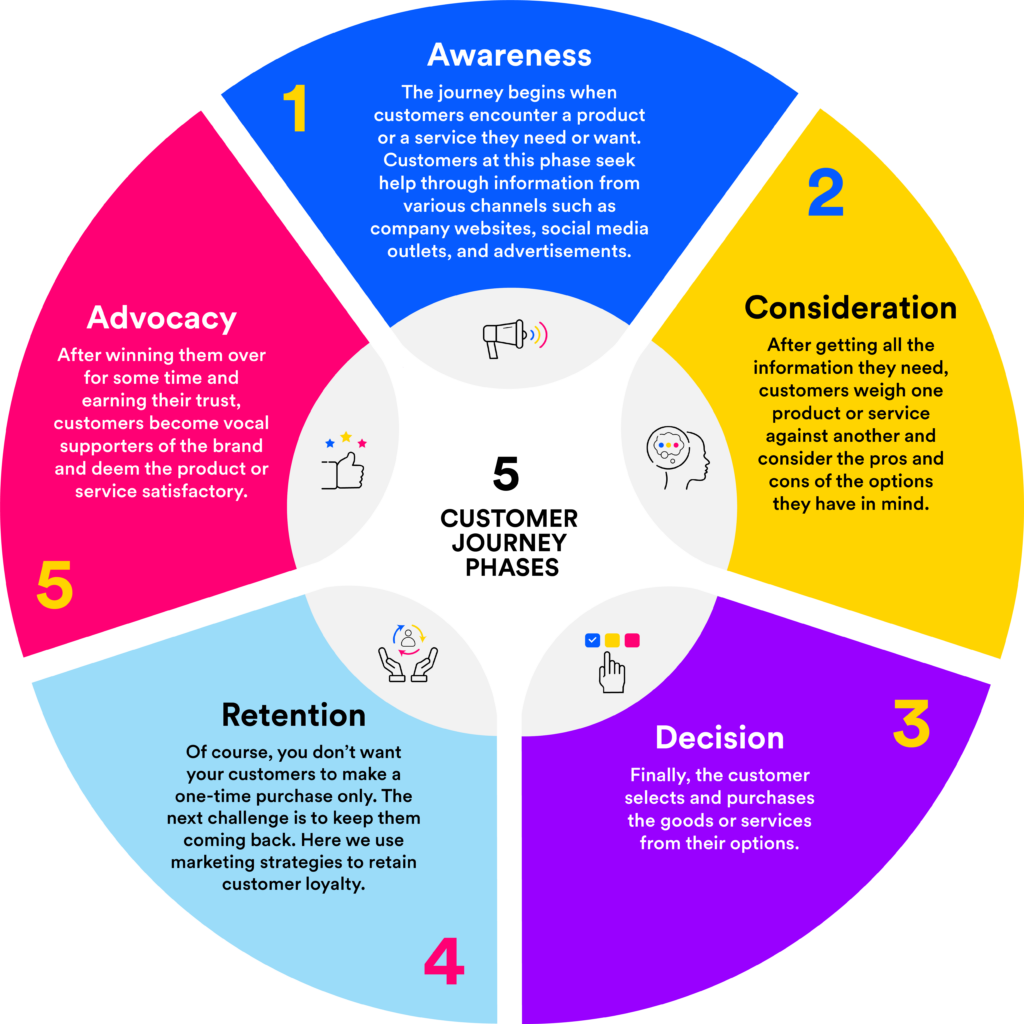Industry Knowledge
The New Hire Experience: Bringing Customer Journey to Life during Onboarding
Many companies consider the importance of a customer’s journey as part of product development, continued improvement to a product or customer service responses and help centers. Overlooking the importance the customer journey can play in onboarding new hires is a lost opportunity that should be integrated into part of the overall experience.
What is the Customer Journey and Why Is It Important?
Let’s start with defining the customer journey. It’s the overall interactions customers undertake with your brand—from the moment they start to interact and beyond. It is the complete sum of experiences that customers go through when interacting with your company and product or service.
For instance, almost everyone has experienced some type of delivery service during COVID-19. Let’s take food delivery as an example. The journey unfolds when a consumer wants to order food. They check out the menu for options, orders food and then waits for it to be delivered.
Let’s unpack that a second. There are a lot of pieces of the journey that we may not normally consider: the journey of the person ordering the food, the restaurant that receives the order, the person who delivers it and the app that manages the process. Different customers at different steps that tie back to the app and main customer—the person who wants food delivered to their door.
The key here is that normally in an onboarding program, new hires learn about a few company products and customers but not the entire picture. That can be limiting and short sighted and cause long-term challenges.
Customers interact with brands in different phases1, and businesses must understand the entire journey to ensure success.

Now that we have a good picture of a customer journey, how is this related to new hire onboarding and employee engagement?
What is Onboarding and Why is it Important?
Now that we understand the general idea around the customer journey, let’s bring it into onboarding. What is onboarding?
The Society of Human Resource Management2 defines onboarding as “processes in which new hires are integrated into the organization.” It goes beyond the new-hire orientation process as the aim is to have a foundational understanding of the organization, culture, and values.
When new hires are engaged, they show positive feedback3 and know what to expect and what the role entails, then this means that the onboarding process is successful. On the other hand, a poor onboarding4 process leads to early resignation, job dissatisfaction, and even project timeline derailment, which negatively affects the department’s morale and productivity.
The company must develop a strategy around the employee journey creating an impactful employee onboarding5 process. While this plan focuses on onboarding, it should also prepare your employees for long-term success.
Let’s go back to the food delivery example, from the moment they start to interact with your brand, and beyond. Customer engagement begins at the moment they click on a food delivery app. The entire experience leading to receiving the desired food item should be seamless—from browsing the menu, customizing add-ons, and to processing payment. To make this all possible, there are people in specific roles following specific processes and using advanced tools and technology.
Impact of Folding the Customer Journey into Onboarding
Let’s talk about some of the key advantages of improving the onboarding process when we fold in the customer journey.
- Getting a clear understanding of the business
Employees are exposed early on to the customer and the services the company provides - they see how the customer interacts with the service and can create empathy towards challenges that may occur with the customer.
- Knowing their impact on the customer journey
Employees can grasp how and what they do impacts the customer and others (internal employees) in the customer journey's timeline. This generates empathy and appreciation for not only customers but also internal departments which may interact with their role later in the process.
- Easily familiarizing their roles
Finally, they have a better baseline understanding of the service and can grasp new concepts quickly post-onboarding. They’re already familiar with the customer, service, the company as a whole, and how departments interact with each other and customers. They’ve seen the big picture and can understand where they fit in and can contribute faster, which also reduces the ramp time and is helpful to the hiring manager for they do not need to spend large amounts of time explaining things because the new hire already knows the basics.
In conclusion
Let’s bring it all together now. While most companies forget or don’t understand the importance of connecting the customer journey to the success of onboarding new hires, we can quickly remedy this by recognizing the short and long-term effects on the new hire, hiring manager, teams, company goals, and the customers. Creating a fun and engaging onboarding experience by folding in the customer journey is more likely to increase employee engagement and awareness as well as help them understand where their role has impact to support not only the customer but across the business.
References

We exist to empower people to deliver Ridiculously Good innovation to the world’s best companies.
Services







